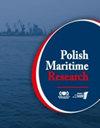发展物流中心的战略:技术趋势和政策影响
IF 2
3区 工程技术
Q2 ENGINEERING, MARINE
引用次数: 0
摘要
摘要 目前,物流中心通过其调节货物、市场和运输的能力,在国家发展中发挥着关键作用。这体现在这些中心提供的基础设施、成本、货物流量和物流服务质量上。然而,在发展中国家或物流基础设施陈旧的地区,传统的物流中心似乎难以管理通过这些中心的商品数量,导致这些设施内长期拥堵,货物流动不稳定。这个问题对任何国家的进步都构成了挑战。新技术的出现为解决传统物流中心固有的问题提供了一条潜在的途径。其中最突出的是四种技术(物联网、区块链、大数据和云计算)在传统物流中心的广泛应用。本研究对这些新技术在物流中心中的功能和作用进行了深入分析和评估。此外,这项工作还提出了在物流中心应用新技术的困难,涉及科学、能源、成本或人员素质等问题。最后,还仔细讨论了与扩大技术应用政策或结合各国物流业政策有关的未来发展方向。本文章由计算机程序翻译,如有差异,请以英文原文为准。
Strategies for Developing Logistics Centres: Technological Trends and Policy Implications
Abstract Logistics centres are currently performing a key function in the development of countries through their ability to regulate goods, markets, and transport. This is shown by the infrastructure, cost, goods flow, and quality of logistical services provided by these centres. Nevertheless, in developing nations or regions with antiquated logistics infrastructure, conventional logistics centres seem to struggle to manage the volume of commodities passing through them, resulting in persistent congestion and an unsteady flow of goods inside these facilities. This issue poses a challenge to the progress of any nation. The emergence of new technology offers a potential avenue to solve the problems inherent in traditional logistics centres. Most prominently, four technologies (the Internet of Things (IoT), Blockchain, Big Data and Cloud computing) are widely applied in traditional logistics centres. This work has conducted a thorough analysis and evaluation of these new technologies in relation to their respective functions and roles inside a logistics centre. Furthermore, this work proposes difficulties in applying new technologies to logistics centres related to issues such as science, energy, cost, or staff qualifications. Finally, future development directions, related to expanding policies in technological applications, or combining each country’s policies for the logistics industry, are carefully discussed.
求助全文
通过发布文献求助,成功后即可免费获取论文全文。
去求助
来源期刊

Polish Maritime Research
工程技术-工程:海洋
CiteScore
3.70
自引率
45.00%
发文量
20
审稿时长
>12 weeks
期刊介绍:
The scope of the journal covers selected issues related to all phases of product lifecycle and corresponding technologies for offshore floating and fixed structures and their components.
All researchers are invited to submit their original papers for peer review and publications related to methods of the design; production and manufacturing; maintenance and operational processes of such technical items as:
all types of vessels and their equipment,
fixed and floating offshore units and their components,
autonomous underwater vehicle (AUV) and remotely operated vehicle (ROV).
We welcome submissions from these fields in the following technical topics:
ship hydrodynamics: buoyancy and stability; ship resistance and propulsion, etc.,
structural integrity of ship and offshore unit structures: materials; welding; fatigue and fracture, etc.,
marine equipment: ship and offshore unit power plants: overboarding equipment; etc.
 求助内容:
求助内容: 应助结果提醒方式:
应助结果提醒方式:


